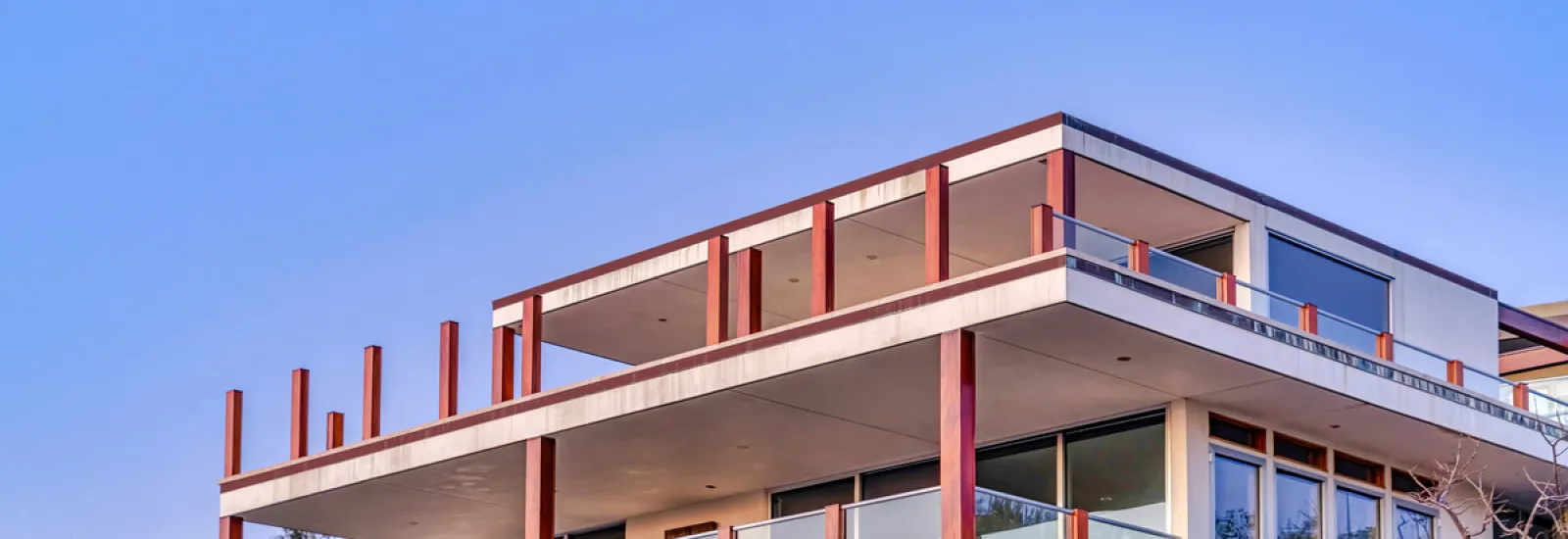Most people who buy a mid-century modern home do so because they love
the design and features of this particular style of home. While mid-century
homes may offer a number of different unique features and principles, a common
characteristic of these homes is the low profile of the roof, which gives the
home clean lines and a more sophisticated, modern look than other traditional
home styles.
If your home's
roof is in need of replacement, or if you're taking on a mid-century reno project to restore the home and return it to its modernist glory, you'll need
be mindful of the roofing requirements and constraints specific to many of
these mid-century modern homes. Here's a look at the common roof types and
possible roofing solutions to consider when working on a mid-century house.
Common Roof Types for Mid-Century Style Homes
While mid-century home styles can feature a wide range of innovative design elements—including rounded roofs, cantilevered structures, and tiered home designs, among others—certain home styles were more prevalent than others. If you're working on a mid-century renovation that involves the home's roof, you might be dealing with one of the following common roof styles:
- Flat roof. One of the most distinctive features of many mid-century modern homes is the flat, or mostly flat modern roof. While the low profile of this roof makes for attractive, clean lines on a home, these mid-century, flat-roof houses can be at a higher risk of water leaks since the roof's drainage is slower. This flat design, and the risk of leaking, will affect the recommended types of roofing for your home.
- Low-profile. While not as clean and horizontal as a
flat roof, low-profile graded roofs still offer a lower profile in line with
mid-century design ideals. They also offer improved water drainage, and can enable vaulted
ceilings in the home's interior.
- A-frame. While not exclusively a mid-century home
design, A-frames go the opposite direction of modern homes with a flat roof,
and instead incorporate the clean lines of a steep roof grade into a modern
home design that offers excellent drainage.
In addition to
these options, some mid-century homes may have more conventional roofs that can
be roofed using traditional roofing options.
Roofing Tips When Building a New Mid-Century Modern Home
As with any home,
the materials choices you make for a mid-century home affect not only your
budget, but also the durability of that roof and, in many cases, its curb
appeal. Here are some tips to help you navigate these choices and arrive at the
best roofing solution for you and your home:
- Consider your home's aesthetic. If your mid-century home is built to
impress, you may think an aesthetically pleasing roof is worth the investment.
Wood roofing, metal, or even stone tiling can offer great curb appeal that
uplifts the appearance of your entire home.
- Be mindful of the life expectancy of any
material you choose. Certain high-end
roofing materials, such as wood shingling, can look great on your home, but may
not last as long on your home. In addition, a low slope will inevitably
increase the exposure of your roof to standing water, which could cause wood
shingles to degrade faster.
- Inspect your home for past signs of
leaking. If you identify
water damage that seems likely to have come from the roof in the past, it could
indicate an increased risk of leaking due to the home's design. If possible,
find out when the leaking occurred and what type of roofing materials were on
the home at the time. If you can't find these answers, you should keep an eye
for new signs of water damage once your new roof has been installed.
Roofing Options for Modern Homes With a Flat Roof
Because of the
high risk of drainage issues and leaks, modern homes with a flat roof may
benefit from special roofing materials that are particularly resistant to water
and potential leaking.
PVC, for example,
is popular as a roofing material on flat roofs because of its ability to offer
a waterproof seal protecting the home. PVC also won't absorb standing water,
and it can provide a smooth service that facilitates water drainage on a very
low roof slope. Similarly, metal roofing can be effective for any roof
with a slope of two inches or greater. While metal can be susceptible to
leaking around the edges, and is more expensive than PVC roofing, it is also
incredibly durable and should last for decades.
In some cases, a
flat roof—particularly one made from concrete—may be effectively roofed with modified bitumen, which
is a low-cost asphalt membrane that can provide a seal against water at a lower
cost than other roofing materials. The drawback of modified bitumen is that its
lifespan can be as short as 10 years, and it is prone to blistering and
cracking due to exposure to the weather elements. For homeowners seeking a
stylish roofing finish for their modern roof, this may also be an aesthetically
unappealing option.
If you're unsure
on the best approach to re-roofing your mid-century modern home, seek out the
help of a trusted local roofing expert that can evaluate your home and
recommend solutions based on your budget and other priorities. Given the cost
of replacing your home's roof, you can protect your investment and your home by
making sure your project is handled by a professional.
